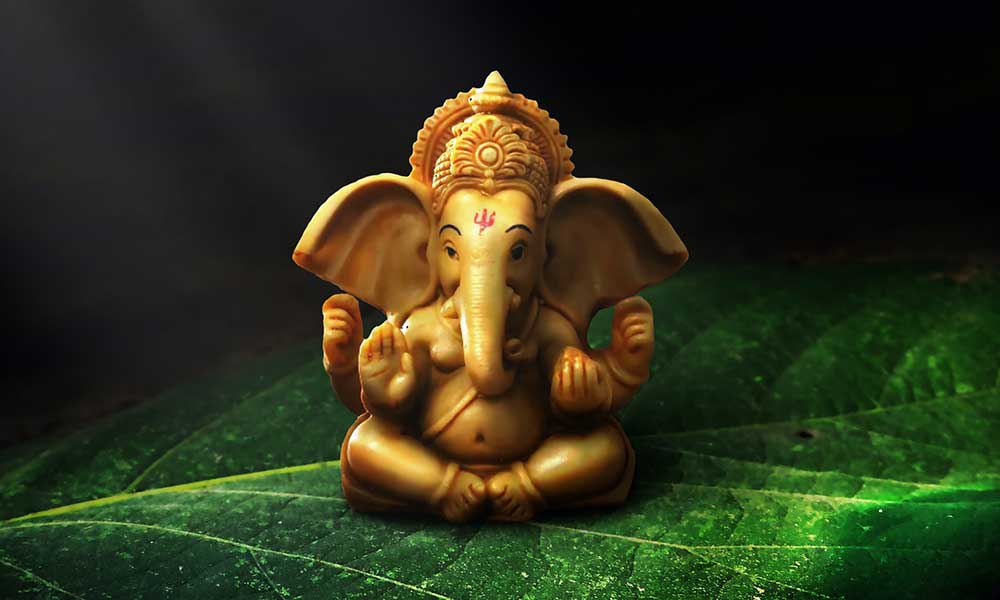If you practice yoga long enough, there are a lot of symbols you will see over and over again. Learning about what these symbols mean can enrich you’re your understanding of the practice and empower you to take your practice to new heights.
If you’re interested in knowing what some of the most powerful yoga symbols represent, keep reading.
What Are Yoga Symbols?
Yoga symbols are visual representations holding meaning associated with the yoga practice, its history, and purpose. They will often make appearances on clothing, jewelry, or tattoos as well as yoga studios, art work or yoga texts.
People who feel passionately about yoga or deeply connected to a particular symbol might want to wear it somewhere on their body or use it for meditation. While traditional yoga was built with the intention to be spiritual, yoga is not a spiritual practice for everyone. Some people practice yoga strictly for the physical benefits. However, for those yoga doers that enjoy the spiritual aspect of yoga, yoga symbols represent various notions that can bring us concentration, happiness, and a strong connection to the universe.
1. Om or Aum symbol
This symbol represents the sound “om” or “aum;” a sound that is traditionally chanted during yoga practices to energize the chakras. It is considered a sacred mantra with remarkable healing capabilities. The sounds and vibrations that are produced by chanting om have a calming effect on the mind and body, bringing feelings of peace, tranquility, and unity.
This unifying sound is usually chanted at the beginning or end of a yoga session.
Here is a breakdown of the Om symbol:
- Hovering over the top of the om symbol is a dot that represents the Absolute State or the 4th state of consciousness. When we are in this state of consciousness, we are able to become one with the divine. The 4th state of consciousness is the ultimate goal of spiritual awakening, where we can experience tranquility and peace.
- Just below the dot, lies a crescent shape which represents illusion. This section of the om symbol depicts any obstacles that stand in the way of you and the absolute state.
- To the left of the crescent are two curves that look like the number 3. The bottom curve symbolizes the waking state, and the top curve represents the unconscious state. The waking state curve is larger since it’s the more recognized state of consciousness. It is the state in which we experience things within the realm of the 5 senses.
- The waking state curve represents the unconscious state. Otherwise known as the “deep sleep state,” we can only be present in this state when we are asleep and everything else subsides, including dreams.
- Right between these two curves is another curve attached to the back that is symbolic of the dream state. The dream state is the realm that we enter just before falling into a deep sleep.
2. Lotus Flower Symbol
The lotus flower, or water lily, is a unique flower that grows in dark, muddy water and blossoms into a beautiful and mesmerizing flower. The magnificent theme behind the lotus flower pertains to the way in which it blooms—the center of the flower and the pedals never come in contact with the dirty water it rose from.
This moving message that the lotus flower brings us is one that represents the human journey of rising above misfortune and blossoming into a lovely, spiritually evolved human being filled with love and light.
The lotus flower symbol holds a meaning that is party of Hindu, Buddhist, and Egyptian culture. While there are similarities between how each culture views the lotus flower symbol, there are some key differences.
Here is an outline of how each of the cultures interpret the lotus flower symbol:
- Hindu culture: In Hindu culture, the lotus flower symbolizes:
- Beauty, specifically in terms of femininity; fertility, prosperity, spirituality and eternity.
- Particular gods such as Laxmi, the god of prosperity and Brahma, the god of creation.
- An offering to the Hindu gods.
- Part of ayurvedic medicinal practices.
- Buddhist culture: The Buddhist culture interprets lotus flower symbolism to mean:
- Purity.
- Spiritual awakening.
- Faithfulness.
- Buddhist culture places a heavy importance on the way the flower blossoms through dark, muddy water. One interpretation that is unique to Buddhism is the significance of the color of the flower:
- Blue lotus flower: common sense and wisdom.
- White lotus flower: purity.
- Purple lotus flower: mysticism and the 8-fold path.
- Pink lotus flower: the “true” lotus of Buddha.
- Red lotus: the heart.
- Buddhist culture places a heavy importance on the way the flower blossoms through dark, muddy water. One interpretation that is unique to Buddhism is the significance of the color of the flower:
- Egyptian culture: According to Egyptian culture, the lotus flower is indicative of life after death. Egyptian culture places a lot of importance on the afterlife, using the lotus flower to represent rebirth and reincarnation. The Egyptians focus more on the way that the flower disappears at night only to reemerge the next day, unharmed. The Egyptian Book of the Dead is believed to have certain spells and rituals that can help you reincarnate to a lotus flower after you die.
The lotus flower is not just a yoga symbol, but a symbol of hope, transformation and spiritual growth to many religions and cultures.
3. Hamsa
You may have seen a Hamsa symbol before on clothing, jewelry, paintings or body art. The Hamsa is another significant symbol that takes places in a lot of cultures and has various interpretations. While each interpretation has a similar meaning, they differ slightly depending on the culture. Overall, the Hamsa is a symbol that represents protection against the evil eye and is said to bring health, wealth and fertility.
The Hamsa symbol is a hand with the three middle fingers extended and an eye in the center of the palm. The placement of the thumb and the pinky finger varies, but no matter what they are always symmetrical and can hold different meanings.
The Hamsa is used in many religions and cultures to evoke the hand of god in order to navigate away from negative energies.
Jewish culture associates the Hamsa with the number 5. Here’s why:
- Each of the Hamsa’s five fingers represent the five books in the Torah as well as the five sacrifices and offerings described in the Torah such as burnt, sin, trespass, grain, and peace.
- Jewish culture also believes that there are five parts of the human soul: physical, emotional, intellectual, spiritual and God.
- The 5th letter of the Hebrew alphabet is Het, which is one of God’s holy names.
Buddhist and Hindu culture share similar beliefs when it comes to the Hamsa. In these two cultures, the five fingers represent the chakra system as well as the five natural elements:
- The pinky finger is symbolic of the sacral chakra and the element of water.
- The ring finger represents both the root chakra and the earth element.
- The middle finger is symbolic of the throat chakra and the celestial elements.
- The forefinger is representative of the heart chakra and the element of air.
- The thumb represents the solar plexus chakra and the fire element.
4. Mandala
You may have seen this popular symbol featured in an adult coloring book or on a wall tapestry. The word mandala means “circle” in Sanskrit and is symbolic of the never-ending circle of life. Typically, mandalas are used as a meditation tool to help uncover a person’s path as well as reveal a story about someone’s past.
A mandala can be used for meditation in two ways:
- You can use a painting or picture of a mandala to focus on, following the pattern, designs, and shapes. While doing so, your mind will cease to race as you begin to understand your life’s journey, whether it be a reflection of your past or guidance for the future.
- You can also create your own mandala by drawing a picture of one or coloring in a blank picture of a mandala. Mandalas have become a popular coloring book option for their calming and meditative benefits.
Before you take out the colored pencils, take note of the different colors that are commonly used in mandalas and what they mean:
- Red= strength.
- Pink= love and femininity.
- Orange= creativity, transformation, self-awareness, and intuition.
- Yellow= learning, wisdom, laughter, and happiness.
- Green= physical healing, physical ability, and love of nature.
- Blue= emotional healing, inner peace, and meditation.
- Purple= symbolic of anything spiritual.
- Black= mystery, deep thinking, individuality.
Mandalas are a symbol of wholeness, unity and harmony. A true mandala will be symmetrical, balanced and intriguing, mesmerizing its admirers with dazzling colors.
5. Buddha
In Sanskrit, the word Buddha translates to “the awakened one.” The first Buddha was an Indian prince named Siddartha Guatama who exchanged his lavish riches and royal lifestyle to embark on a journey of self-discovery, true purpose, and happiness.
Determined to find true fulfillment, the prince studied with religious prophets for years before beginning a six-year journey to share with others the road to achieving peace and happiness in life. His teaching is referred to as the Dharma.
Buddha is symbolic of many different values including protection, serenity, meditation, medicine, and teaching. The image of Buddha is also often used to represent someone who has achieved a state of “Bodhi” and therefore, may act as a spiritual guide for others. Buddha, or “The Enlightened One” is someone who knows everything—past, present, and future—and whose perception has been freed of all bias and ignorance.
A person may be referred to as Buddha if he or she:
- Has unlimited compassion.
- Is absolutely impartial.
- Does not judge nor discriminate.
- Loves all living beings.
- Is wise and powerful.
- Is charitable.
- Has a high moral ground and practices self-discipline.
- Is honest and generous.
- Is kind and patient.
- Is slow to anger and non-violent.
The image of the Buddha is a strong, spiritual symbol for a lot of people. It holds deep meaning as it has the power to remind us of the three tenants of Buddhism which are:
- Do not be ignorant.
- Do not hate others.
- Do not get angry.
Gazing at a symbol of Buddha can remind us to be the best versions of ourselves at any given moment throughout the day.
6. The number 108
While you might think that the number 108 is merely just a number, many religions around the world would beg to differ. Many cultures and religions believe that the number 108 holds sacred significance.
Traditional yoga deems 108 to be a number with mystical significance due to its repeated presence in nature, science, and ancient architecture. There are many instances in which 108 appears throughout life and history. For example:
- The distance between the earth and the sun is 108 times the diameter of the sun.
- The distance between the earth and the moon is 108 times the diameter of the moon.
- The diameter of the sun is 108 times the diameter of the earth.
- There are 108 sacred sites in India.
- There are 108 pressure points throughout the human body.
- 108 energy lines connect to form the heart chakra.
- There are 108 different types of feeling: 36 in the past, 36 in the present, and 36 in the future.
- 108 beads are used to create malas, garland, or prayer beads.
- Stonehenge measures 108 feet in diameter.
- The High Temple of Lamanai located in Belize stands 108 feet tall.
- The Tikal Temple in Guatemela is 108 feet tall.
- In the Hindu religion, there are 108 different names for gods.
- In Jainism, there are 108 virtues.
- The number 108 is known as a Harshad Number, which means that it is divisible by the sum of its numbers (1+0+8=9 and 108 can be divided by 9). “Harshad” is a Sanskrit word for “joy.”
- The Sanskrit alphabet has 54 letters, each letter embodying two forms: masculine and feminine. 54 x 2= 108.
- There are 108 forms of meditation and 108 paths to God.
- There are 108 Tibetan Holy Books.
7. Mala Beads
Mala beads, similar to the rosary that is used in Catholicism, are a string of beads that are used for meditation and/or prayer. The Sanskrit word “mala” means “meditation garland.” A standard mala usually contains 108 beads and one Guru bead.
The Guru bead is always the largest of all the beads, symbolizing a spiritual guide. The Guru bead is also used to mark the beginning and end of your meditation, representing the relationship between a spiritual guide and their student.
To use mala beads, you would hold the string of beads in your hand and move your fingers to a new bead each time you say a mantra. The beads help you keep track of how many times you have said a mantra or prayer. Some malas will even have a tassel on them to represent a connection between you and God.
Like the mandala, mala beads can feature different kinds of materials and colors.
Each color on a mala holds its own meaning:
- Red Jasper: Grounding, organization, creativity, empathy, rejuvenation, mental clarity, and focus.
- Red Tiger Eye: Motivation, protection, perception, humility, and confidence.
- Garnet: Cleansing and energizing, self-confidence.
- Rose Quartz: Truth, harmony, and unconditional love.
- Rhodonite: Balancing and healing.
- Unakite: Grounding and balancing.
- Carnelian: Creativity, motivation, vitality, and courage.
- Amber: Healing, cleansing, vitality, stress relief, and emotional healing.
- Goldstone: Energy and protection.
- Citrine: Energy and prosperity.
- Yellow Malay Jade: Wisdom, moderation, and perspective.
- Honey Calcite: Energy, vitality, confidence, strength, and persistence.
- Green Aventurine: Compassion, empathy, perseverance, prosperity, and decisiveness.
- Moss Agate: Self-esteem, self-improvement, inspiration, and optimism.
- Green Jade: Serenity and tranquility.
- Malachite: Creativity, confidence, and emotional balance.
- Blue Aventurine: Communication and creativity.
- Blue Tiger Eye: Stress relief, motivation, protection, perception, and humility.
- Indian Bloodstone: Healing, detoxification, and revitalization.
- Lapis Lazuli: Inner truth, self-awareness, and self-expression.
- Blue Sky Jasper: Protection.
- Amethyst: Memory and concentration, motivation, and protection.
- Crazy Lace Agate: Calming and self-acceptance. Self-confidence, concentration, and focus.
- Sugilite: Protects and repels negative energy and attachments.
- Smoky Quartz: Stress relief.
- Black Agarwood Eaglewood: Invigorates, purifies, and relaxes.
- Obsidian: Clarity, stability, compassion, and strength.
- Black Onyx: Protection, strength, good fortune, vigor, and health.
- White Howlite: memory, patience, calm and positive feelings.
- Mother of Pearl: Healing, protective, and creative.
- Clear Quartz: Cleansing and healing.
- Pearl: Grace, purity, truth, happiness, compassion, and integrity.
- Bodhi Seed: Awakening, Spiritual promise, dedication, and faith.
- Bayong Wood: Stability and spirituality.
- Brown Agate: Inner stability, self-confidence, composure and maturity.
- Tulsi: cleansing and protecting.
- Rosewood: Protection.
8. Ganesh
The Hindu god, Ganesh, is represented by an image of an elephant’s head on a human body. Known as the Lord of Good Fortune and the Lord of Beginnings, Ganesh is a symbol of prosperity, fortune and success.
Each different part of Ganesh holds a unique meaning:
- The large elephant head is a symbol of wisdom and knowledge.
- The small eyes serve as a reminder to focus on the simple things in life.
- The small mouth on Ganesh is there to remind us to embrace silence.
- The large ears encourage us to be a better listener.
- His trunk is a symbol of versatility and fluidity.
- The single tusk on Ganesh is there to remind us to keep our attention on the good and forget about the bad.
9. Chakras
The chakra symbol is another popular symbol that you may see in yoga or spiritual texts. It is usually in the form of a human body sitting upright, with brightly colored circles going from the tailbone up to the crown of the head. The brightly colored circles represent the seven different chakras, or energy centers, that run along our spinal column.
The word “chakra” translates to “wheel or disk” and refers to the energy that spins and flows throughout various centers in the body. Each energy point holds a different meaning and performs a unique function. When our chakras are functioning properly, we feel at peace and balanced. However, our chakras can also be either deficient or excessive. When one of our chakras is excessive or overactive, it means that we need to release excess energy from that center. When our chakra is deficient, it means we need to draw more energy into that area.
There are many different things that can cause our chakras to become dysfunctional such as trauma and abuse, cultural upbringing, restrictive and exhausting habits and beliefs, physical and emotional injuries, and the loss of autonomy or human rights.
Here are the different chakras and what they are responsible for:
- The Root Chakra:
- Located at the base of the spine/tailbone region.
- It is an earth element, represented by the color red.
- Represents our basic right as a human on earth. It is centered around our physical identity and foundation.
- This chakra allows us to feel grounded. When this chakra is balanced, we feel safe, secure and comfortable.
- A lack of energy in this chakra might cause you to have anxiety, restlessness, inability to focus, poor boundary setting.
- The Sacral Chakra:
- Located in the lower abdomen, just beneath your belly button.
- It is a water element that is represented by the color orange.
- This chakra revolves around our sensuality, sexuality, creativity, and pleasure.
- This chakra rules the way in which we connect with others. When it is balanced, we are highly intuitive, spiritually intelligent, and creative.
- When this chakra is overactive, you may experience risky sexual behavior, addictions, strong, tumultuous emotions and an emotionally dependent sexual nature.
- When this chakra is deficient, you may have a lack of excitement or desire as well as a fear of sexual pleasure.
- The Solar Plexus Chakra:
- Located in the upper abdomen.
- It is a fire element that is represented by the color yellow.
- This chakra is all about the right to our individuality, our ability to act and be unique.
- When this chakra is balanced, we feel responsible and “on-track” in life. When this chakra is deficient, we have low-energy and low self-esteem which may even manifest as an addiction to stimulants.
- The Heart Chakra:
- Located in the center of the chest near your heart.
- It is of the air element and the correlates with color green.
- This chakra is centered around our ability to love ourselves and others, our social identity and self-acceptance.
- When our heart chakra is balanced, we feel compassion toward others, full of love and empathy.
- When this chakra is lacking, we may feel depressed, judgmental and lonely.
- The Throat Chakra:
- Located in the throat.
- It is associated with the element of sound and represented by the color blue.
- This chakra is symbolic of our right to have a voice and speak our truth, but may also represent self-expression and creativity.
- When the throat chakra is balanced, you look and feel like a good listener and communicator.
- When your throat chakra is lacking energy, you might be afraid to speak your truth or have a hard time expressing yourself verbally.
- The Third Eye Chakra:
- Located between the eyes.
- It is an element of light represented by the color indigo.
- This chakra is all about intuition, self-reflection and the right to see and be seen.
- When this chakra is balanced, you may feel especially intuitive and perceptive. When this chakra is blocked or deficient, you may feel lack imagination, have vision problems or poor memory.
- The Crown Chakra:
- Located at the top of your head.
- This chakra is associated with the element of thought and is represented by the color violet.
- This chakra is ruled by the right to learn and obtain knowledge and wisdom.
- When this chakra is balanced, you are able to perceive and analyze. You have the ability to be open-minded and thoughtful.
- A lack of energy in this chakra can cause you to have difficulty learning, and a closed mind.







